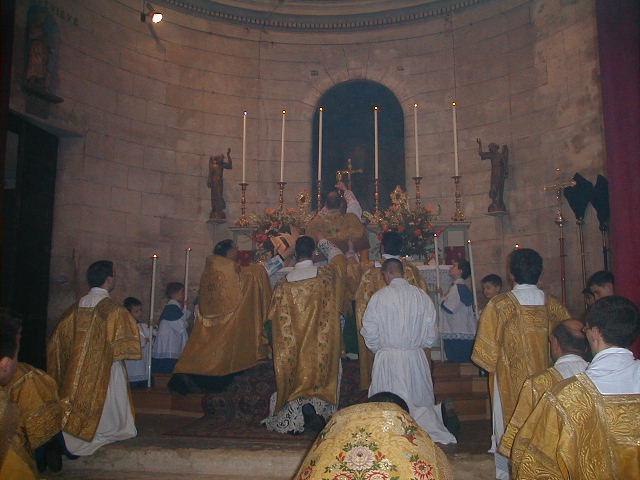Choir dress is the traditional vesture of the clerics, seminarians and religious of Christian churches worn for public prayer and the administration of the sacraments except when celebrating or concelebrating the Eucharist. It differs from the vestments worn by the celebrants of the Eucharist, being normally made of fabrics such as wool, cotton or silk, as opposed to the fine brocades used in vestments. It may also be worn by lay assistants such as acolytes and choirs. It was abandoned by most of the Protestant churches that developed from the sixteenth-century Reformation.
Bishop in choir dress with train
Choir dress of a Cistercian nun: a long white cowl
Norbertine abbot in white prelate choir dress, 18th century
Monsingnor Herrincx in Franciscan brown prelate choir dress
Vestments are liturgical garments and articles associated primarily with the Christian religion, especially by Eastern Churches, Catholics, Lutherans, and Anglicans. Many other groups also make use of liturgical garments; among the Reformed (Calvinist) Churches this was a point of controversy in the Protestant Reformation and sometimes since, in particular during the ritualist controversies in the Church of England in the 19th century.
Clergy of various ranks in vestments at a Mass according to the Neo-Gallican Rite of Versailles Elevation of the chalice.
Illustration of liturgical garments from Acta Eruditorum, 1713
Ornate vestments which are used by the Catholic clergy: A chasuble, dalmatic, cope, and a biretta
Gold-embroidered epitrachilion (stole) dating from 1600, in the Benaki Museum, Athens








